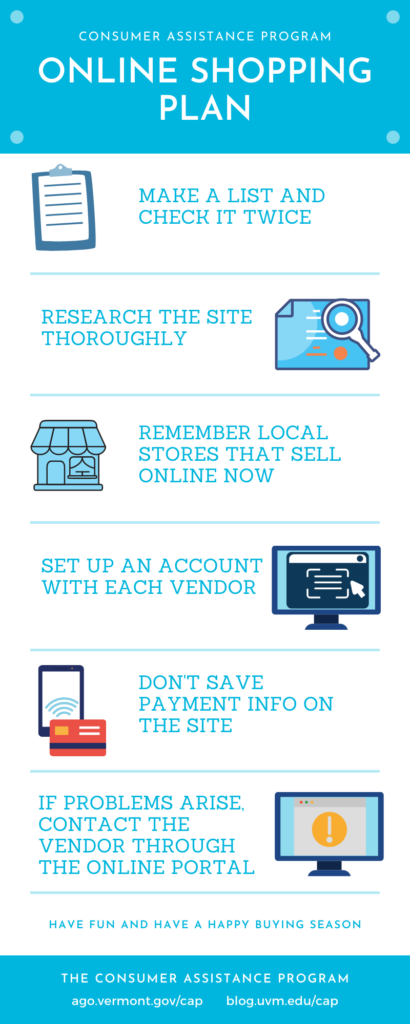Giving gifts, whether to friends or organizations with meaningful missions can bring warmth and cheer during this cold time of year. Help yourself and others avoid holiday purchasing pitfalls by slowing down throughout your consumer transitions, taking steps to verify, and reaching out to your trusted community supports when questions arise. Talking about our consumer experiences—the good, the not so good, and the detrimental—can help others make informed purchasing decisions. Here are a few things I have learned:
- Give wisely – You can look up charities thoroughly before giving. You can see how they allocate funds and whether giving to them will count as a tax deduction. The EIN of charities are even online so that you can verify the organization exists.
- Plan out your online shopping – Always doublecheck the URL (website) is the one you know and trust before proceeding. For new stores, research thoroughly before buying by checking state business registrations, looking up BBB information, and searching for complaints online. Always ask friends for their opinion. All the information gathering will help you make an informed decision.
- Avoid fake ads – Just because you see it online, does not make it real. It can be the nicest looking professional graphic design around and it can still be a scam. If you are seeing ads that interest you while perusing the internet check it out on the site you know to be valid. Most sites have a promotions section so that you can see the latest deals being offered.
- Watch your “spaving” – That’s spending to save. Do you really need that extra set of doll boots that gets you to the site’s $150 free shipping minimum, or are you just spending more to get shipping (a $10 charge) for free? The same goes for buying bulk products you don’t use or need and participating in “buy more, save more” events (if you spend $100, you get 25% off).
- Use store rewards when it benefits you – When you sign up for store memberships with rewards programs, your consumer activity is tracked. The rewards program comes with an incentive for you to spend more to earn more rewards. (Another kind of buy more, save more). Periodically, you receive a coupon or credit representing the rewards you have earned that you can apply toward your future purchase. Store rewards can lead to savings when you use them to buy things for which you have a use.
- Pay with a credit card when you can, because credit cards come with built-in consumer fraud protection. A smart consumer spending choice is only charging what you can pay back right away so that you can pay off the amount without incurring more debt.
- Always watch out for scams – Scammers thrive during this busy time. When we have a lot going on, we become more susceptible to scams.
During this time of giving and kindness, keep your friends, family and community close, keep talking and you will help each other avoid consumer problems and scams.
If you have encountered problems with the purchase of goods or services in Vermont, you can contact the Vermont Attorney General’s Consumer Assistance Program by calling 1-800-649-2424, or by going to our website at ago.vermont.gov/cap.


 For many, this means a lot of shopping must be done. From school supplies to sizing-up clothes, it’s back to school and retail shopping season. Whether you shop in store or online, we hope to provide you with some helpful information to shop smart.
For many, this means a lot of shopping must be done. From school supplies to sizing-up clothes, it’s back to school and retail shopping season. Whether you shop in store or online, we hope to provide you with some helpful information to shop smart.
